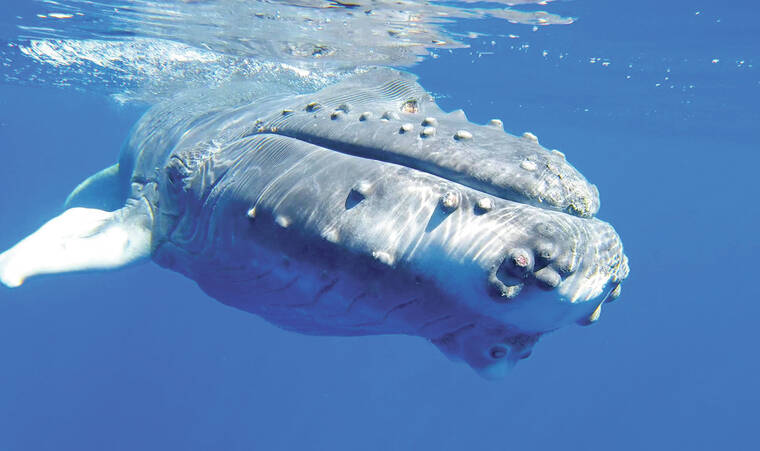LIHU‘E — The Hawaiian Islands Humpback Whale National Marine Sanctuary will hold its first-ever research symposium today and Friday, one month after Kaua‘i boaters spied the first whales of the season off the Na Pali Coast.
The free online event will feature introductions to the latest science and conservation work conducted in the 1,370 square-mile sanctuary. But attendees should not anticipate simple answers to common questions.
Instead, they can expect a greater understanding of experts’ efforts to those solve long-standing riddles, according to Sanctuary Superintendent Allen Tom.
“I think the public expects answers overnight,” Tom said. “They want to know, ‘Does this sound affect the whale? Why is this whale choosing Hana versus Kona?’”
The scientific community doesn’t know for sure – yet. That’s why a global network of specialists continue to plumb the oceans’ depths.
Tom understands people are unsatisfied by the countless uncertainties surrounding the federally-endangered humpback whales. He hopes the symposium, in addition to chipping away at those mysteries, shows how much work and evidence is required before experts can draw conclusions.
“It’s not a problem, it’s just a fact about science,” Tom said. “It takes years to get the data. We have to get the data, then we have to analyze it, then we have to have it peer-reviewed and then we have to publish it.”
HIHWNMS, operated by the National Oceanic and Atmospheric Administration, is the only species-specific sanctuary in a country-wide network of 15 national marine sanctuaries and two marine national monuments.
It encompasses 40 square miles off the north-easternmost coast of Kaua‘i and the Kaua‘i Ocean Discovery visitor center in Lihu‘e, which is closed until further notice due to COVID-19 precautions.
This week’s symposium will address whale population sizes, calving mortality and more. Two-thirds of the North Pacific humpback population travels to Hawai‘i each year to mate, give birth and raise calves, but no human has ever seen one of these births take place.
It’s also unclear why the whales gather among the islands. Some individuals spotted in Hawai‘i one year go to Japan or Mexico the next. Sometimes, they move between multiple areas in a single season.
This dearth of knowledge is in part due to the whales’ massive range. Unlike Hawaiian dolphin species, which are at hand year-round, humpbacks travel throughout the North Pacific, including Alaska.
“We don’t even know exactly the route they’re taking when they go to Alaska,” Tom said. “It’s not a straight line … I mean, are they even making it to Alaska? We don’t even know that.”
There is something everyone knows for certain: humpback whales are fascinating. Humans are drawn to them like magnets.
“What I’ve heard from people who go out on the water, it’s if they see the eye looking at them,” Tom said. “… It’s like some kind of epiphany, that they have seen and interacted with a large animal bigger than they are – bigger than a school bus.”
The two-day symposium will run from 9 to 11 a.m. each day.
To register online, visit: https://register.gotowebinar.com/register/3737916640499178768.
A closed-caption recording of the seminar will be published online next month at https://sanctuaries.noaa.gov/education/teachers/webinar-series.html.
Organizers encourage those interested to register even if unable to attend live, in order to receive notice of the video’s availability.
•••
Scott Yunker, reporter, can be reached at 245-0437 or syunker@thegardenisland.com.


